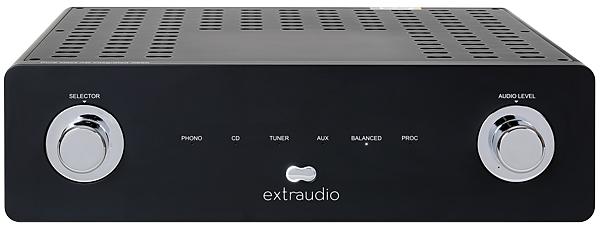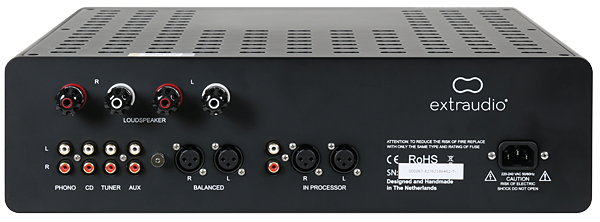Extraudio X250T Integrated Amplifier

 An artisan brand with its own take on Hypex's tried-and-tested Class D amp module offers both tube and transistor variants to taste. Here's the low-down on the latter
An artisan brand with its own take on Hypex's tried-and-tested Class D amp module offers both tube and transistor variants to taste. Here's the low-down on the latter
Hybrid amps have always amused me. I still dream of Radford's TT100. This hi-fi equivalent of grafting two plant species hopes – ideally – to combine the best of a brace of disparate technologies. Too often, they marry the worst. Extraudio's X250T represents a first for me in that it promises to take efficient, compact Class D amplification and endow it with the sonic virtues of Class A, hence Class AD. Which made me think of playing with Krells way back in 1985.
Given that this £8495 integrated amp's £4000-dearer sibling, the X250, is a hybrid of a different sort, in which valves and Class D are combined, one might infer that the founders of this Dutch company suffer schizophrenia, if not, ADD. But the proposal is sensible, if you are told the X250T's goal is to offer 1) value for money, 2) zero obsolescence, 3) reliability and 4) a 'Listening experience at affordable price'.
Minimalism Mastered
Hmmm… No 1 is relative, No 2 impossible to predict, and No 3 not calculable during the period of the review, but No 4 can be assessed. I am assuming they left out the adjective 'Pleasurable' or 'Musical', because clearly it offers 'a listening experience'. What is certain from the initial, empirical exposure to the X250T is that this is a delightful object exuding superlative build quality, sensible layout and svelte styling.

Available in matte black or silver, as opposed the X250's more vivid orange, the X250T is surprisingly compact for a factory-rated, 200W/ch unit, occupying only 445x125x395mm (whd) and weighing a wieldy 18kg. It is minimalist in a way that only the Northern Europeans seem to have mastered, the front panel self-explanatory, with rotary source selector on the left and level on the right, and LEDs in between denoting which source is active: Phono, CD, Tuner, Auxiliary, Processor and Balanced. Below them is the illuminated power-on button (from standby) in the form of the Extraudio logo, which is similar in shape to rival Gato Audio's signature fascia profile. Go figure.
All inputs – four via RCA, 'Balanced' via XLR – are line level, while the one marked 'Processor' is not a throughput loop per se, as in the days when you might have inserted a graphic equaliser. Instead it accepts, via RCA or XLR balanced inputs, an AV preamp or processor input or audio bypass input for a home cinema setup. The X250T then acts as a power stage only and turns off all other systems and the preamp section.
Ergonomic Joy
Extraudio can fit the Phono Preamp MM PH1 module as a £525 option, but supplies the amplifier with an RF remote handset to provide power on/off, volume up/down and mute. Using an RF coil to deliver instructions to the amp at distance is unusual, particularly when others are using BT remotes, but that's all part of the charm!
From switch-on, the X250T takes exactly 62 seconds to come out of mute, the light changing from orange to white. Now I am used to this delay because, daily, I use a Quad VA-One [HFN Dec '16] and Audio Research equipment, both of which make the listener suffer through a warm-up period. I don't like it, but I get it. What I cannot fathom, however, is the operation of the mute via the remote once the system is up-and-running.
When my phone rings, for example, and I hit 'mute', I want instant silence. This unit languidly turns down its motorised volume control for an agonising 6.5sec according to my chronometer-certified timepiece. Same procedure when you want the volume back on, but pressing the mute button again doesn't restore the level: you have to hold down the volume + button. Again, I want the sound back asap, not after I have enough time to go and bake a cake. Oh, and power down takes 20secs.

























































